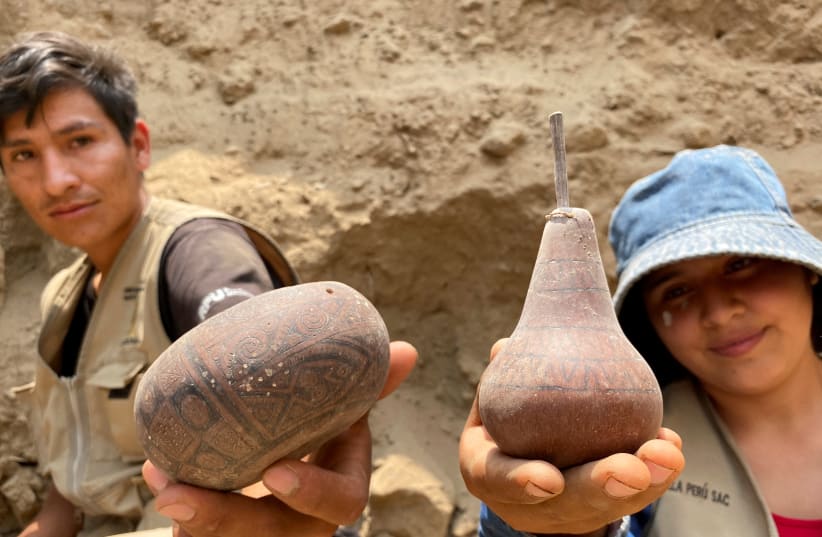Archaeologists carefully extracted six tiny mummified bodies of young children, tightly wrapped in cloth and tied with ropes, from a dusty tomb in what was once the sacred pre-Incan city of Cajamarquilla, located just east outside of Lima.
The archaeologists believe the young children were most likely sacrificed in order to accompany a young nobleman into his journey into the afterlife, but noted more analysis is needed.
The excavation team, led by Prof. Pieter Van Dalen Luna and archaeology student Yomira Silvia Huamán, found the nobleman’s extremely well-preserved mummified body in the same tomb complex in November. The mummy was in a fetal position, with his hands covering his face, typical of ceremonial burials.
In addition to the child mummies, the archaeologists also found the remains of seven adults placed at the entrance to the tomb of the Cajamarquilla mummy, suggesting that most of them were sacrificed to accompany the soul of the nobleman on his long journey to the world of the dead. The adults were not wrapped in bundles.
The announcement of the mummies’ discovery was made by the National University of San Marcos in Lima on February 14.
The Cajamarquilla burials were dated from between 800 CE and 1200 CE, and included ceramic objects and organic and botanical elements. Researchers said that in one of the tombs with the most elements and most elaborate finds after the Cajamarquilla mummy’s tomb, a woman was found with a baby wrapped in funerary bundles, completely surrounded by these organic and botanical elements, as well as a spindle for spinning textile fibers.
Van Dalen Luna noted that the techniques used to mummify the children were very advanced and sophisticated, as evidenced by the highly preserved state of the mummies. He said Andean societies believed the afterlife was a transition into a parallel world, rather than an end.
“We think that some of them could be the children, the wife and the closest servant of the Cajamarquilla mummy, who were sacrificed as part of the funerary rituals that rendered him an important character, whose soul had to be accompanied to cross the long road to his last resting place or world of the dead,” he said.
Yvonne Fleitman, senior curator of the Americas at the Israel Museum in Jerusalem, who is not connected to the excavation, noted that it is possible that if the human remains are found to be the children and wife of the nobleman, they had already died earlier and were reburied with their father and husband when he died, or that they were servants.
Such was the case in the excavations of an unopened tomb of a mummy found in 1987 in northern Peru, known as the Lord of Sipán, she said. The remains of three young women – possibly his wives or concubines – were found in the tomb, and following analysis were found to have died sometime before the king.
“No one would want to kill his wife or children because then he would have no heirs,” she said. “It is not logical.”
She added that human sacrifices were actually a rarity and were only used in burial ceremonies of the elite.
Silvia Huamán said the findings enrich their investigation that began in October, because unlike the Cajamarquilla mummy found earlier wrapped in ropes, the conditions of the 13 people show a change in traditions toward a more coastal ritual.
Silvia Huamán said she believes further analysis of the finds will support the theory that Cajamarquilla was a place of cultural clashes between mountain and coastal peoples.
During the Andean Late Intermediate Period (1000 CE-1450 CE), the mud city of Cajamarquilla became a multiethnic commercial center, where people of various nationalities lived, although mainly from the pre-Incan Ichma and Chaclas cultures. Its location was strategic, on the right bank of the middle valley of the Rímac River, and the city may have been home to 10,000 to 20,000 people.
In addition to their archaeological excavations, the team of researchers is using their work at the Cajamarquilla site for social and cultural outreach to the current local population in order to acquaint them with their archaeological cultural heritage.

